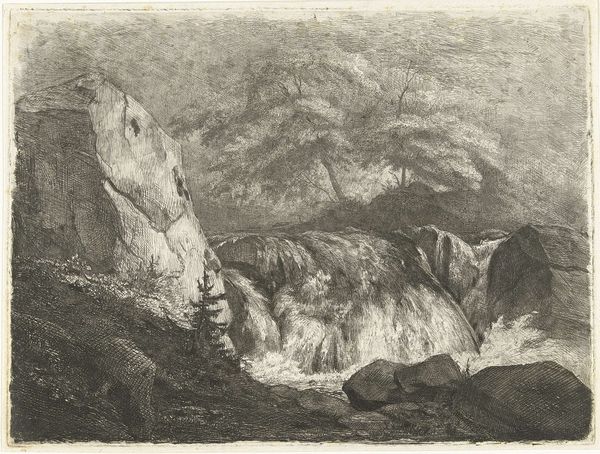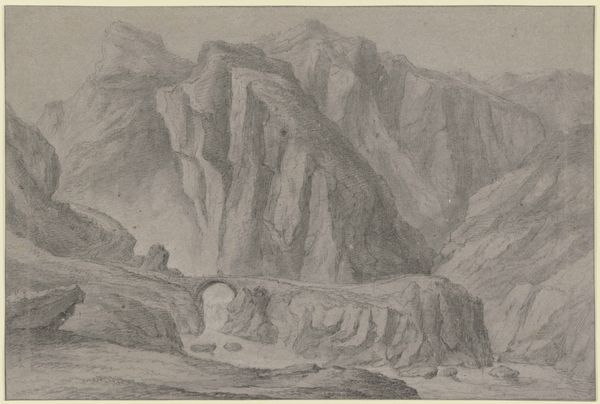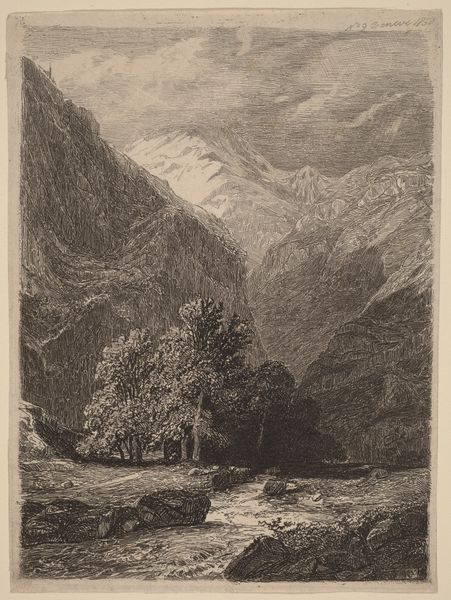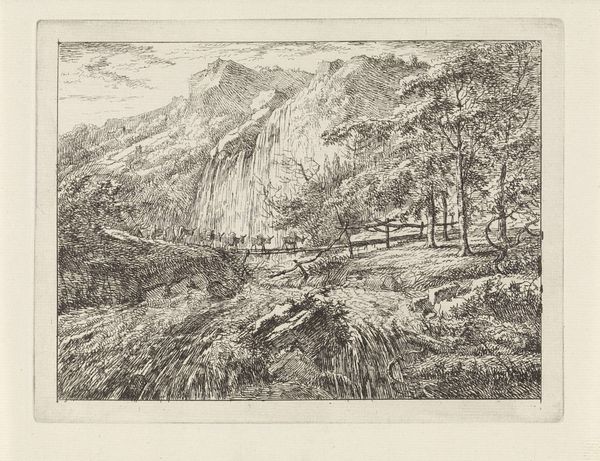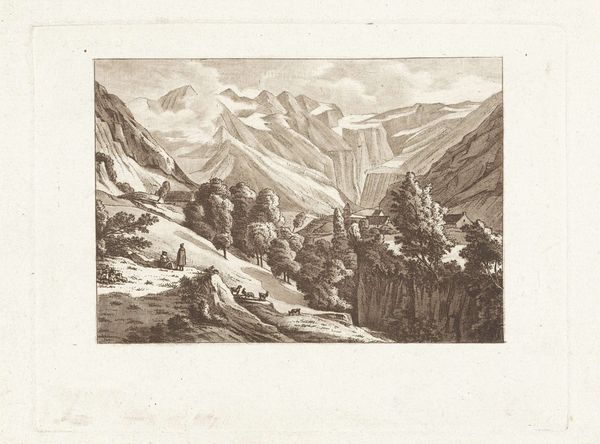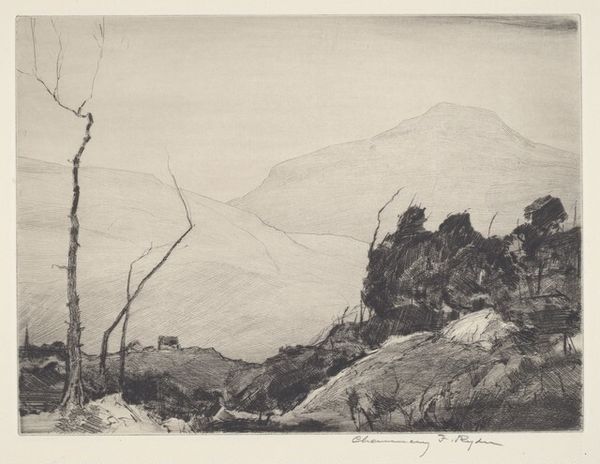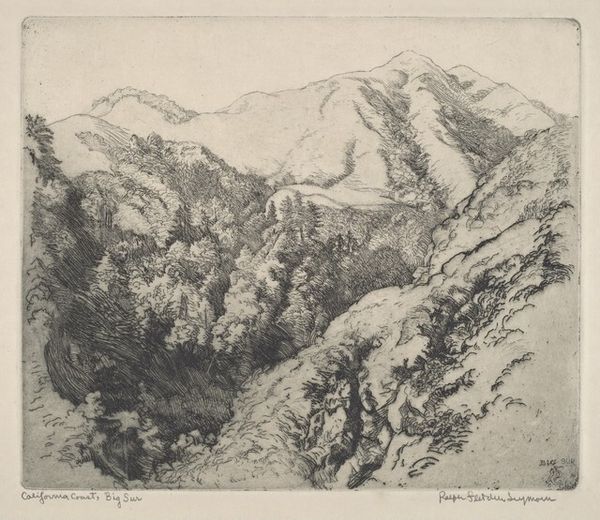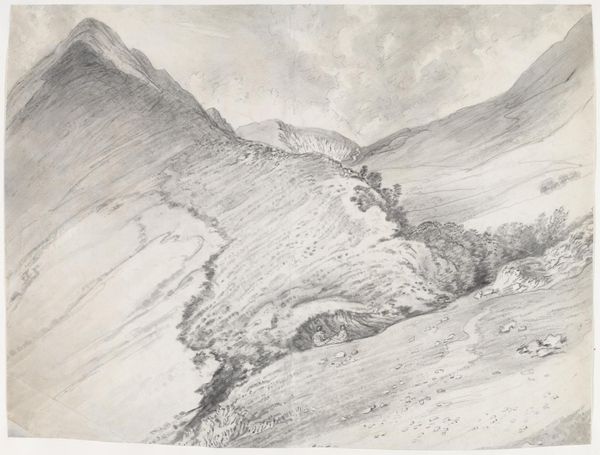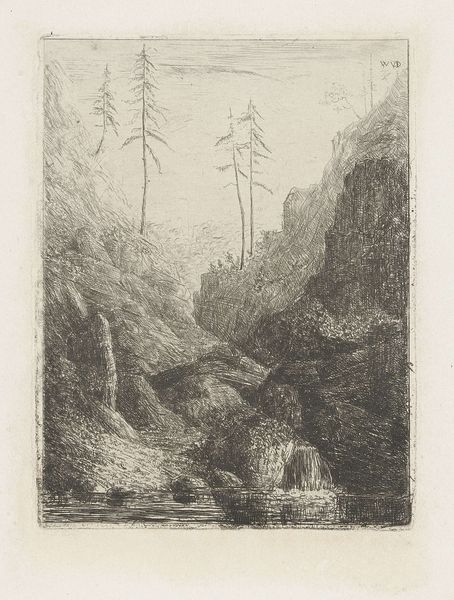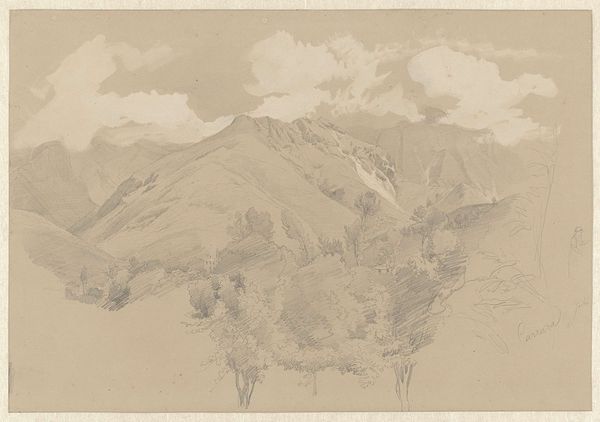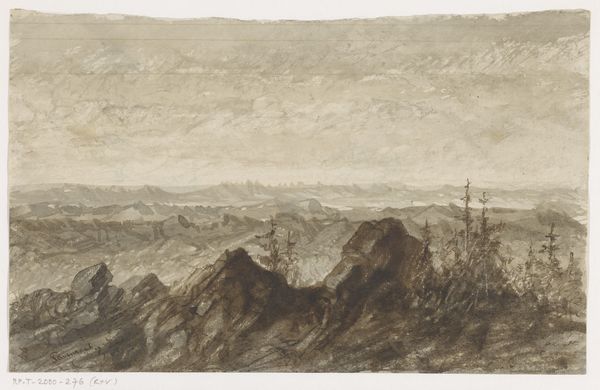
drawing, etching
#
pencil drawn
#
drawing
#
etching
#
pencil sketch
#
landscape
#
etching
#
pencil drawing
#
line
#
realism
Dimensions: height 149 mm, width 211 mm
Copyright: Rijks Museum: Open Domain
Curator: Let's discuss "Gezicht op bergdal" (Mountain Valley View) by Willem Matthias Jan van Dielen, likely created between 1815 and 1867. It's a captivating scene rendered in etching, pencil drawing, and pencil sketch techniques. Editor: My first impression is that of a rugged sublime landscape, evoking a powerful sense of isolation. The high contrast etching highlights the textural diversity and draws your eye into its intricate depths. Curator: The timeframe places it within a period of significant social upheaval and evolving understandings of the natural world. One must ask what relationship exists between landscape and nation-building, how romanticization or representation of uninhabited areas contributes towards political ideologies prevalent at the time? The rugged landscape can represent national identity as steadfast and unyielding in times where identities where becoming the central topic. Editor: Absolutely. But looking at its formal aspects, note how van Dielen uses contrasting line weights. See how the distant mountains fade into hazy lines, and in comparison how trees in the foreground exhibit incredibly fine detail that grounds them firmly within reach? These visual choices certainly steer the viewer to experience distance and place, and invites us to observe from a fixed perspectival viewpoint within this tableau. Curator: A very pertinent point, as who gets to take a singular perspective needs also interrogation – class, gender, location - it's essential to consider those excluded and disenfranchised by similar visual renderings. This valley as it's rendered speaks volumes about land rights and use – Whose gaze defines beauty, and who is permitted ownership or access within a socio-political climate? Editor: Perhaps so. I simply find the technical virtuosity fascinating—the balance and rhythm found throughout compositional organisation, from light gradation techniques offering unique surface qualities all rendered within careful execution. Curator: The rendering isn’t merely illustrative, though; consider van Dielen’s positioning within the debates of his time. He was navigating the tension between representing objective reality and romanticising landscape to create political effect – as cultural narratives impact artistic expression so significantly . Editor: Indeed. And reflecting again on its construction, this visual arrangement delivers more nuanced experience compared simple representations: an intense awareness that underscores both fragility as human endeavour meeting force across these rugged, immutable terrains. It's all rather wonderfully conceived overall when examining how surface design affects reception through composition choices which emphasize contrast – a powerful dynamic indeed when looking overall! Curator: A dialectical tension we, perhaps, replicate today too—where the land meets not only human endeavour, but collective responsibility.
Comments
No comments
Be the first to comment and join the conversation on the ultimate creative platform.
